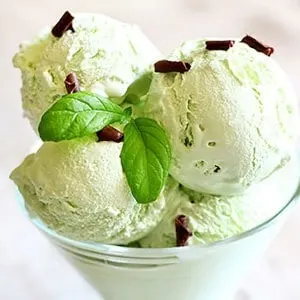 Do you know the difference between good and bad ice cream? Smooth and creamy ice cream can be a dream to eat. Grainy or gritty ice cream is never tasty or sweet like it’s supposed to be. Did you ever wonder why this is happening? If yes, then read on.
Do you know the difference between good and bad ice cream? Smooth and creamy ice cream can be a dream to eat. Grainy or gritty ice cream is never tasty or sweet like it’s supposed to be. Did you ever wonder why this is happening? If yes, then read on.
I’ll provide a few solutions to the problem: why is my ice cream gritty? I’ll also show you how to make your ice cream smooth and creamy again.
Why Is My Ice Cream Grainy or Gritty?
There are several reasons why your ice cream can become gritty. These reasons can be easy to fix, and ensure you can enjoy smooth and creamy ice cream.
Low-Quality Ingredients
The most common reason for gritty ice cream is the use of low-quality ingredients. Low-fat milk, for example, is more likely to produce grainy ice cream than whole milk. Cheap vegetable oils are also a culprit, as they tend to produce an unpleasant grittiness in finished products.
If you’re using low-quality ingredients, the best solution is to switch to higher-quality ones. If you can’t do that, there are a few things you can do to improve the texture of your ice cream. One is to add some cornstarch or flour to the mixture; this will help to thicken it and reduce the grittiness. Another is to make sure your ice cream mixture is well-chilled before you put it in the freezer. A final tip is to use a good quality ice cream maker.
Follow the Recipe Exactly
It’s important that when making your own homemade ice cream recipe that you follow it exactly or else it will turn out grainy. If the sugar isn’t properly dissolved before freezing then the result is going to be grainy too.
Over-Churning
There’s an easy way to determine if your ice cream is grainy because it has been over-churned. Simply examine the texture of the ice cream as you stir it in the machine.
If it looks like small hard curds, then it’s likely that there was too much air pumped into the mixture during churning. This usually happens when you use a cheap old-style ice cream maker or by using one that does not have an incorporated freezer mechanism.
An easy way to tell if your ice creams are over-churned is by taking a look at how fast they’re melting after being taken out of the freezer. A well-made batch should take about 15 to 20 minutes before all of it is melted. If it melts too quickly, then it was over-churned.
If your ice cream is gritty because it has been over-churned, the best solution is to start again with a new recipe. You can also try adding some heavy cream to the mixture to help reduce the amount of air that was whipped in.
Don’t Refreeze after Melting
If your homemade batch of ice cream melts and refreezes again, then there’s also a chance it could turn grittier. This is because liquid can get caught in these little pockets and turn into hard chunks after being frozen again. If this happens, use an immersion blender to smooth it out again.
Check Your Freezer
If you’re using high-quality ingredients and your ice cream is still gritty, there may be something wrong with your freezer. Ice crystals can form in the freezer and cause grittiness in the final product. Make sure your freezer is set at the correct temperature and that it’s not overcrowded. If necessary, move some of your frozen food to another part of the freezer.
Why is my Ice Cream Gritty – Final Thoughts
Hopefully, one of these solutions will help you to get rid of the gritty texture in your ice cream. By paying attention to the ingredients you’re using and being careful with your freezing techniques, you can avoid this common problem. Enjoy your smooth, creamy ice cream once again!
